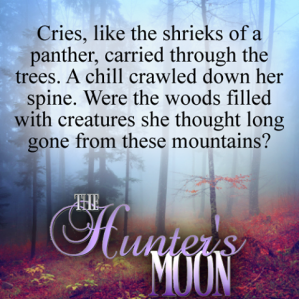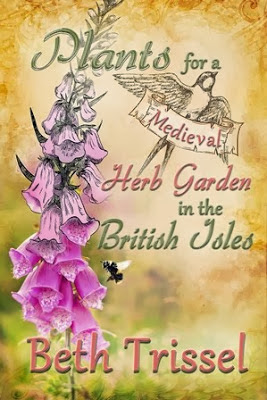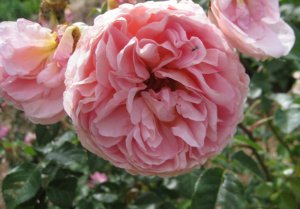Our resident fairy expert, my niece Cailin, tells me I have a very fairy friendly garden, which is good to know. But for those of you who want to up your appeal in the fairy world, here are some plants you might want to include in your garden, and some to ward off malevolent fae. Plus more ABOUT fairies.
“Fairies are invisible and inaudible like angels. But their magic sparkles in nature.” ~Lynn Holland
“The fairies break their dances
And leave the printed lawn.”
~A.E. Housman
 Foxglove. Fairies are reputed to love the blossoms, and the plant is essential for fairy gardens. According to legend, fairies sleep in the bell-shaped flowers, and wear them as gloves. In addition to foxglove, thyme is thought to be a favorite of fairies and drifts of thyme are left for them in the garden. If you plant a fairy garden, be certain to include, thyme, foxglove, saffron, rosemary, and roses.
Foxglove. Fairies are reputed to love the blossoms, and the plant is essential for fairy gardens. According to legend, fairies sleep in the bell-shaped flowers, and wear them as gloves. In addition to foxglove, thyme is thought to be a favorite of fairies and drifts of thyme are left for them in the garden. If you plant a fairy garden, be certain to include, thyme, foxglove, saffron, rosemary, and roses.
“The fairy poet takes a sheet
Of moonbeam, silver white;
His ink is dew from daisies sweet,
His pen a point of light.”
~Joyce Kilmer
 Scottish or English bluebells are also highly favored by fairies. Lore has it that they ring the bluebells to call a meeting and anyone who hears the bells ring will die or fall under the enchantment of fairies. And whatever you do, don’t step inside a bluebell ring or you’ll meet the same fate. Another lovely bit of lore says a young woman who can turn a single bluebell inside out without damaging the blossom will win the one she loves.
Scottish or English bluebells are also highly favored by fairies. Lore has it that they ring the bluebells to call a meeting and anyone who hears the bells ring will die or fall under the enchantment of fairies. And whatever you do, don’t step inside a bluebell ring or you’ll meet the same fate. Another lovely bit of lore says a young woman who can turn a single bluebell inside out without damaging the blossom will win the one she loves.
I trust they also like the Virginia bluebells my dear grandmother gave me that have spread beautifully and bloom in among the late daffodils.
“Spread your wings and let the fairy in you fly!” ~Author Unknown
“Nothing can be truer than fairy wisdom. It is as true as sunbeams.” ~Douglas Jerrold
 Wood Anemone: These are beautiful plants. I have some anemones, also called wind flowers, that bloom in my spring garden.
Wood Anemone: These are beautiful plants. I have some anemones, also called wind flowers, that bloom in my spring garden.
From The Scots Herbal by Tess Darwin
“A widespread plant of woods, also found on upland grassland and moorland where it may be a relic indicating previous woodland cover. It provided a safe refuge for fairies to take their beauty sleep or shelter from rain, as the flower closes at night and at the onset of wet weather.”
Blooms in spring. Note: Poisonous. Contains a bitter oil that causes severe skin irritations and gastric disturbances if ingested. Musky scent. Alternative name ‘Smell fox.’
 Now here’s an interesting flower and twist on fairies.
Now here’s an interesting flower and twist on fairies.
The Butterwort Family: From The Scots Herbal by Tess Darwin
“This was a magical plant in the Scottish islands. People who carried it were protected from witches; cows that had eaten it were immune to elf-arrows. It was woven with other flowers into a magic hoop to place under the milk pail and protect the milk from fairies. There is a story of a woman keeping watch over a newborn baby to prevent fairies stealing it and leaving a changeling—a sickly, fey fairy child—in its place. Two fairies came to the cradle and could not take the child because its mother had eaten butter made from milk of a cow that had eaten butterwort.”
”From this informative site on Butterwort (A carnivorous plant): http://www.plantlife.org.uk/scotland/wild_plants/plant_species_scotland/?ent=1220
“The striking triangular leaves, with their rolled edges, appear in a star pattern at the base of this pretty flower.”
The flowers are deep violet-blue with a pointy funnel shape. Butterwort is widely distributed in Scotland, Wales, and the north of England. It likes a damp habitat such as bogs, fens, wet heaths and the crevices between rocks.
 Butterworts main use medicinally is for coughs, particularly whooping cough. The leaves are used to curdle milk in order to make butter.
Butterworts main use medicinally is for coughs, particularly whooping cough. The leaves are used to curdle milk in order to make butter.
Mountain Ash, also known as the Rowan Tree in the UK and Dogberry Tree in parts of Canada, is a familiar sight in the mountains surrounding the Shenandoah Valley.
Rowan trees planted near stone circles in Scotland were thought to be favored by fairies who held their celebrations within the protective tree enclosed circle. Fairies are extremely cautious. But the fae can also get up to mischief, so the rowan would protect you from that as well. One of those multi-use herbs/trees. It’s gorgeous in autumn when covered with bright red berries, and particularly attractive to birds.
 Rowan or Mountain Ash also wards off werewolves, possibly vampires and witches, too, should these be a problem for you.
Rowan or Mountain Ash also wards off werewolves, possibly vampires and witches, too, should these be a problem for you.
“This is a work of fiction. All the characters in it, human and otherwise, are imaginary, excepting only certain of the fairy folk, whom it might be unwise to offend by casting doubts on their existence. Or lack thereof.” ~Neil Gaiman








































































